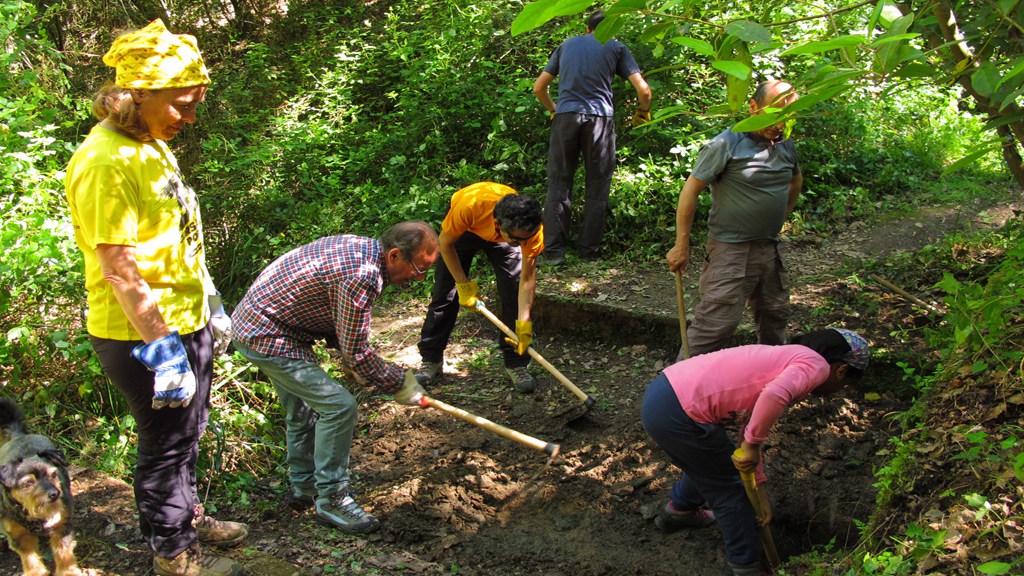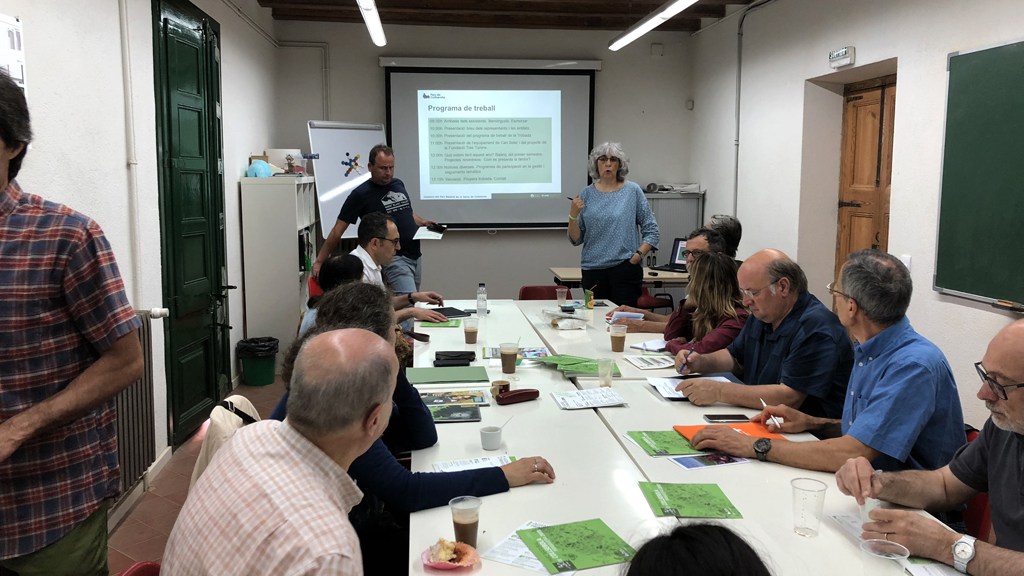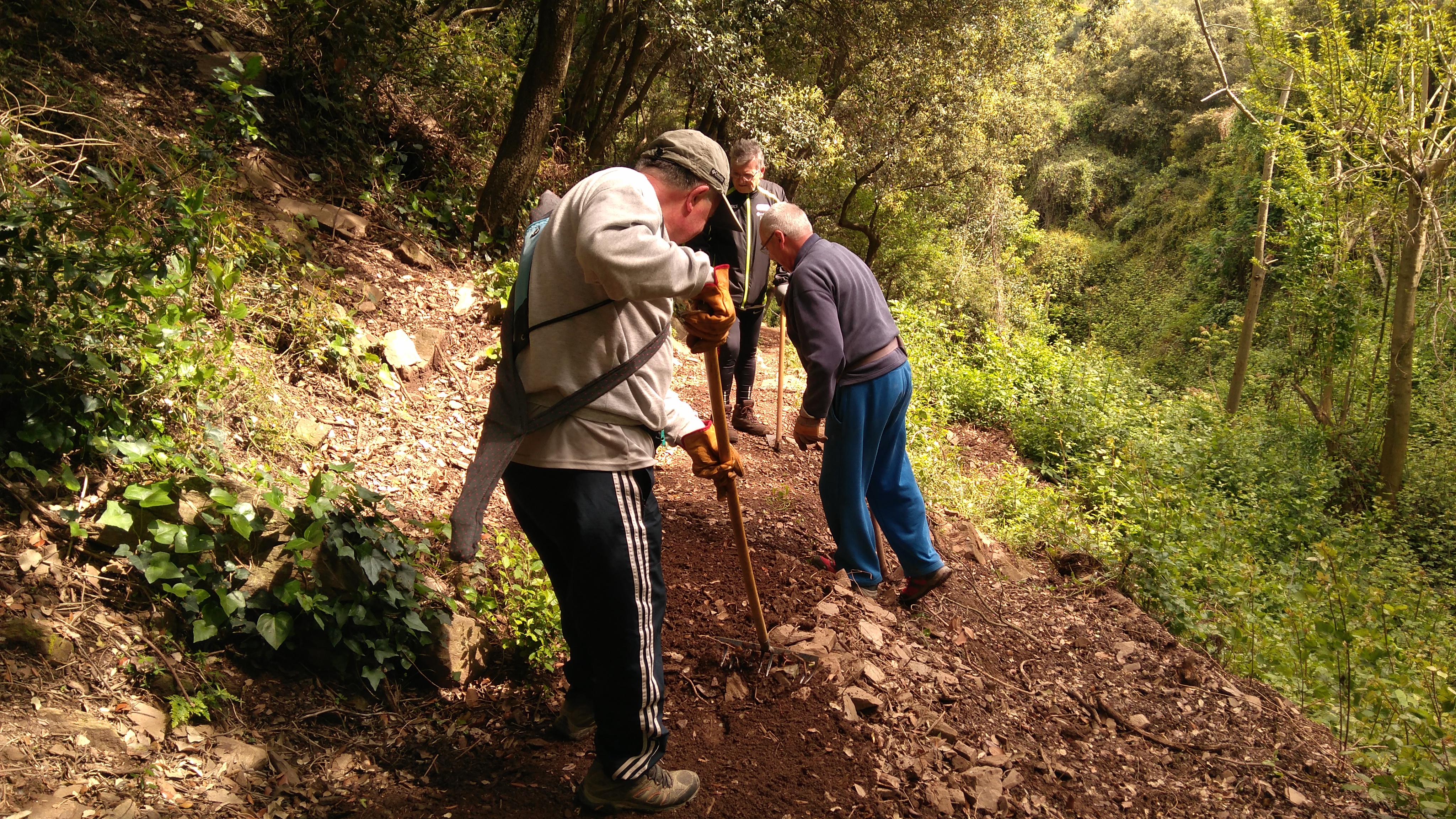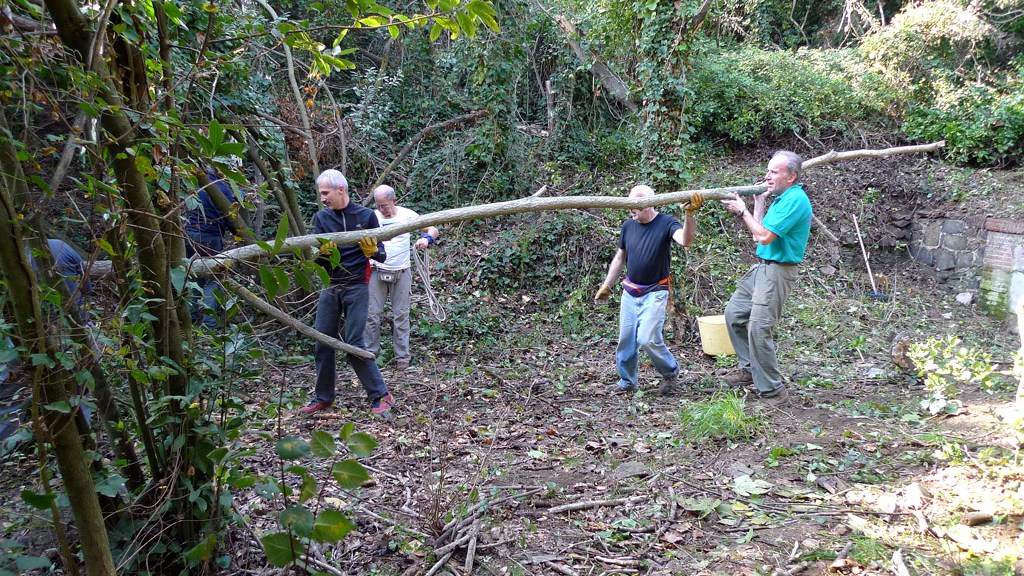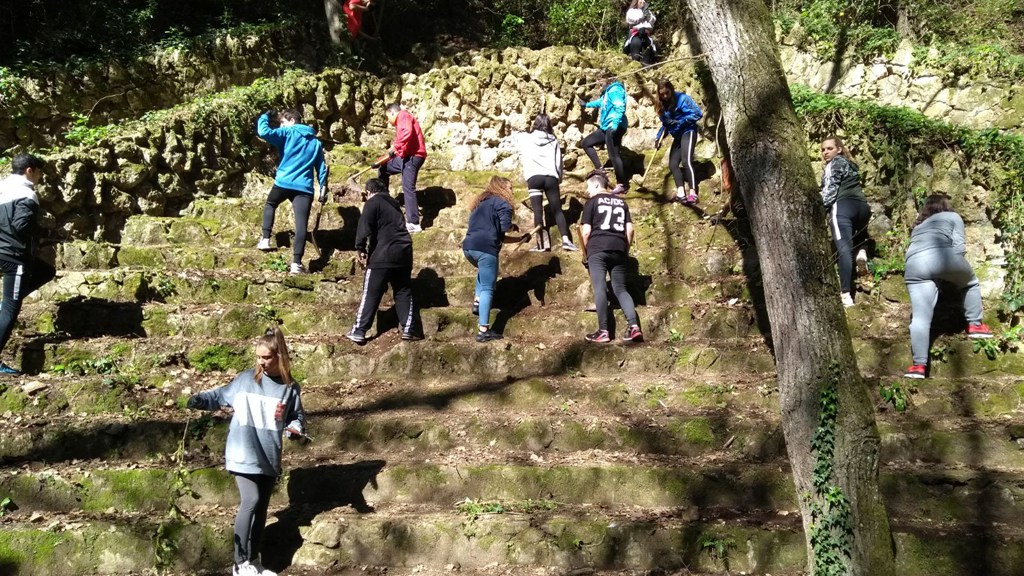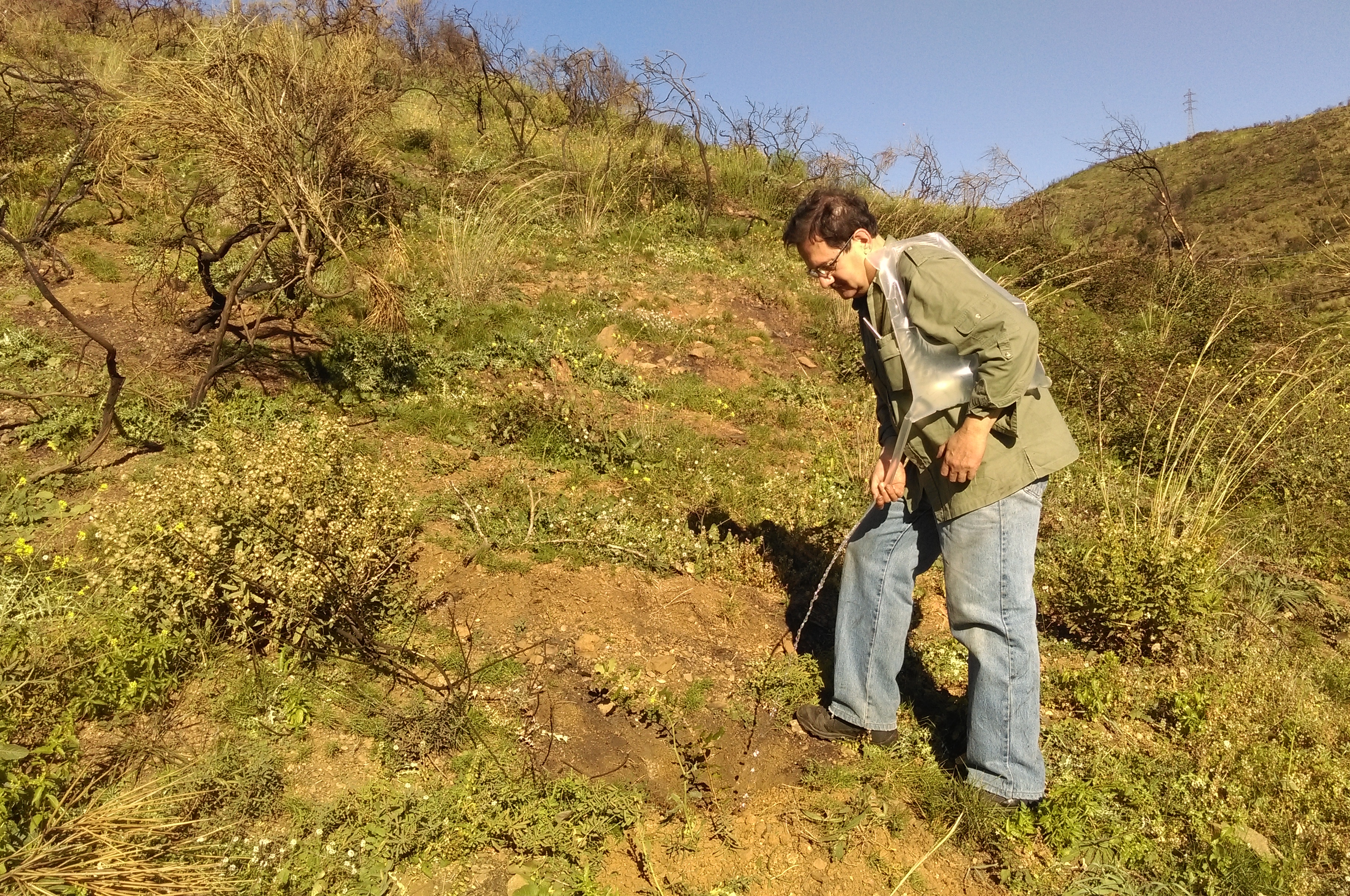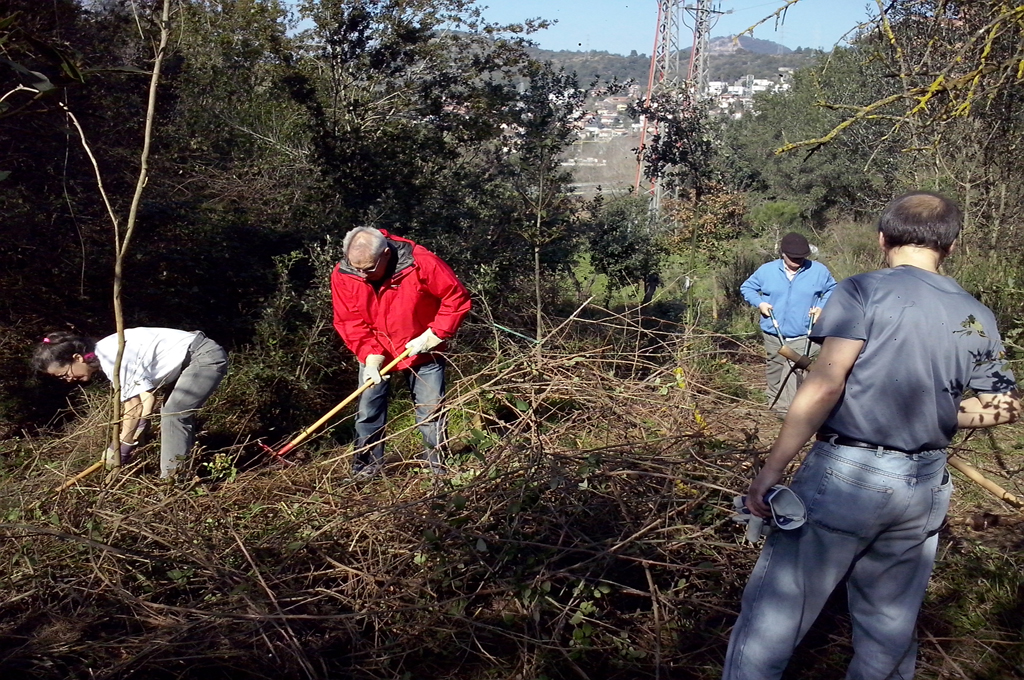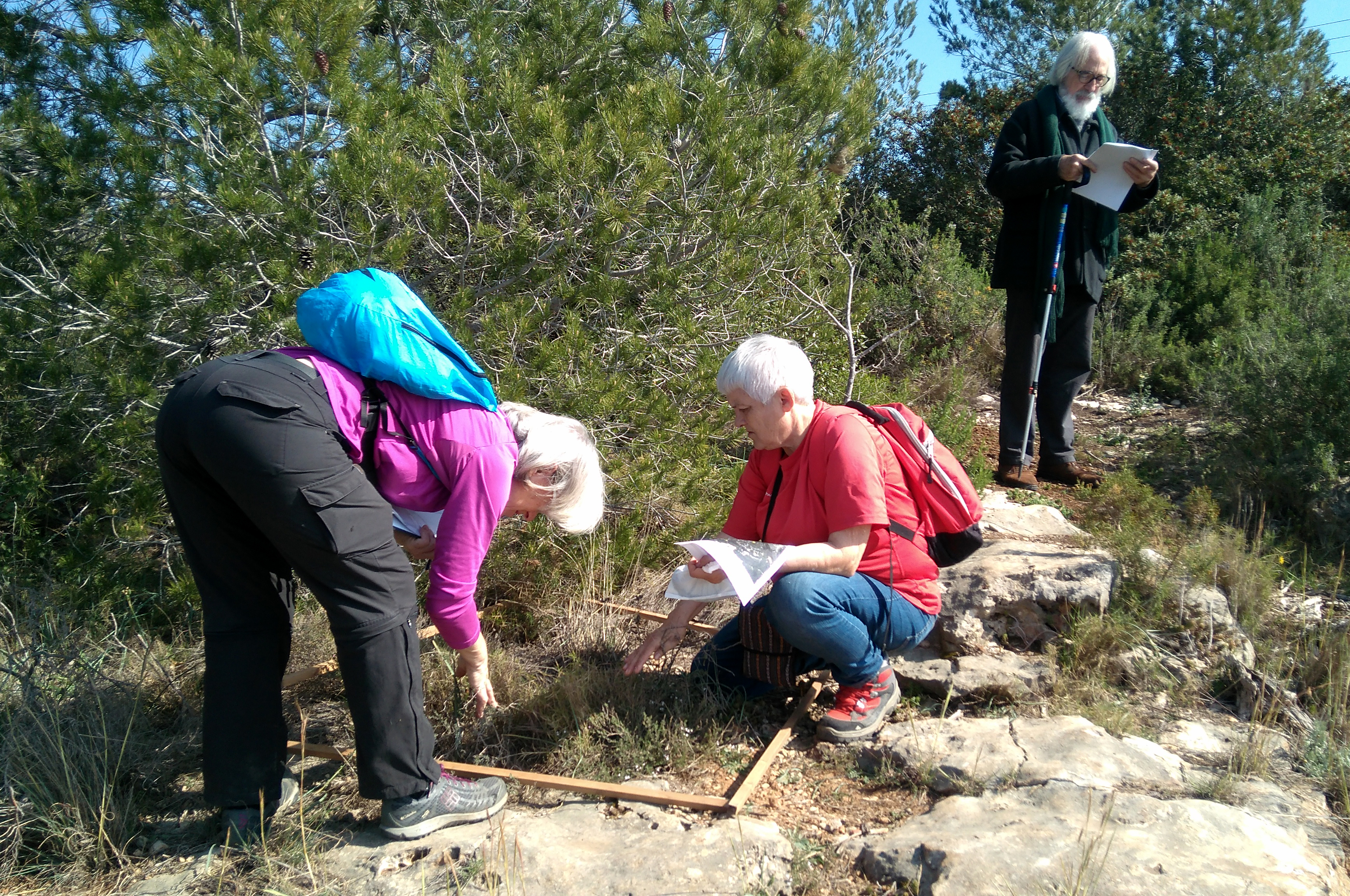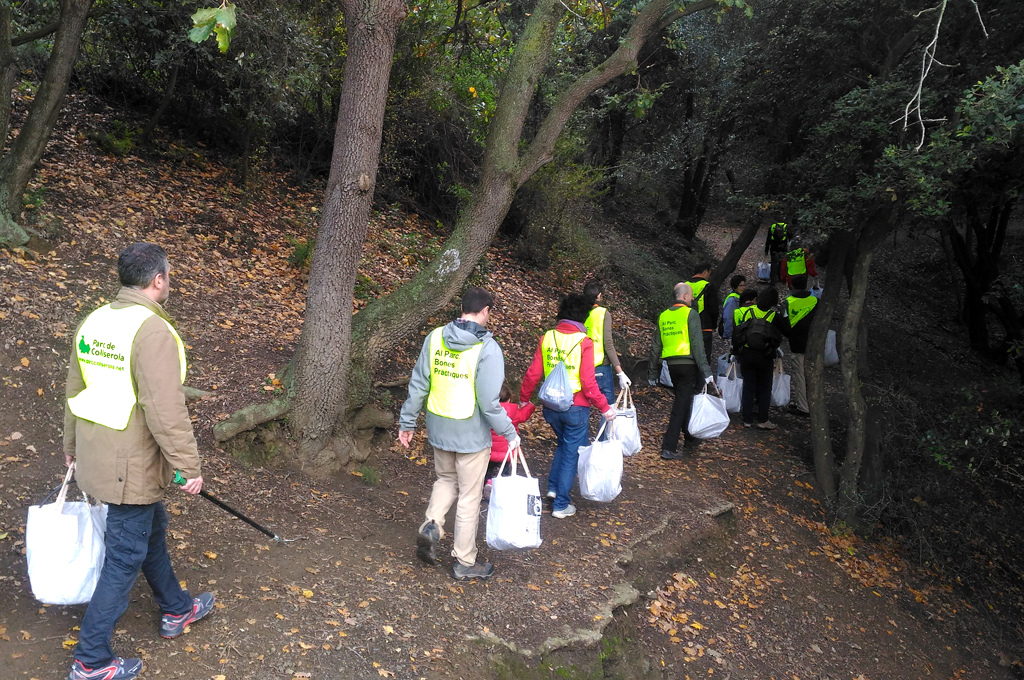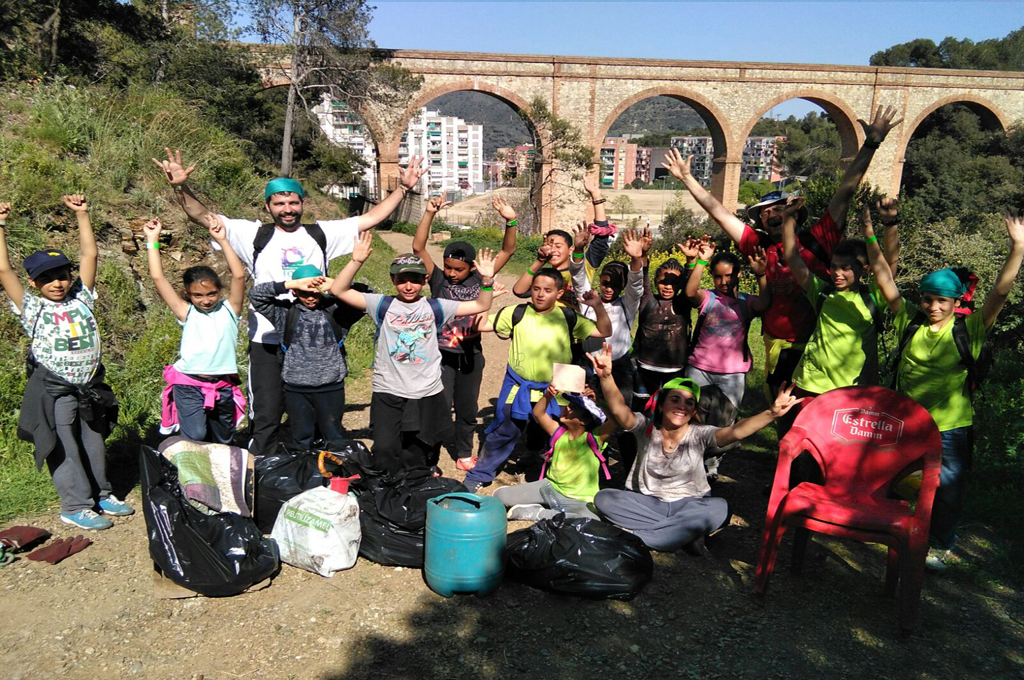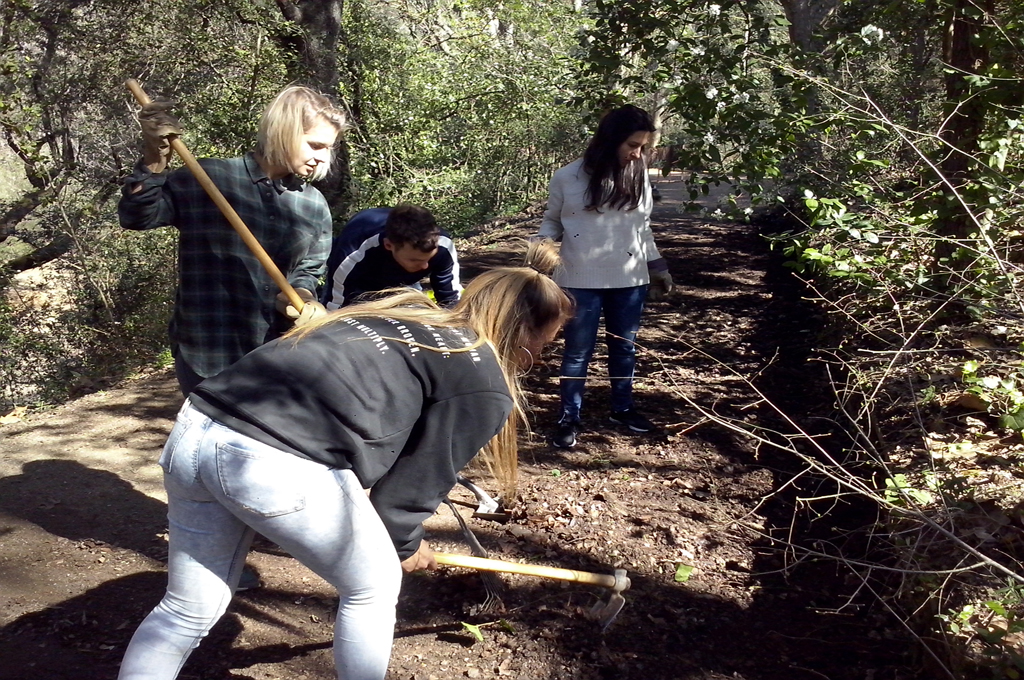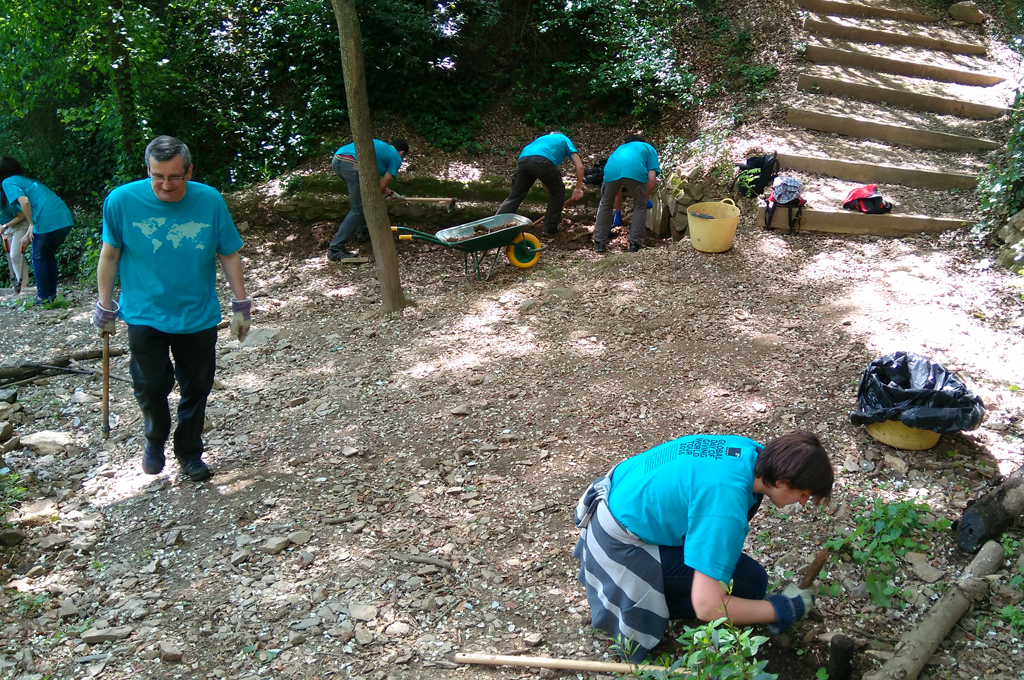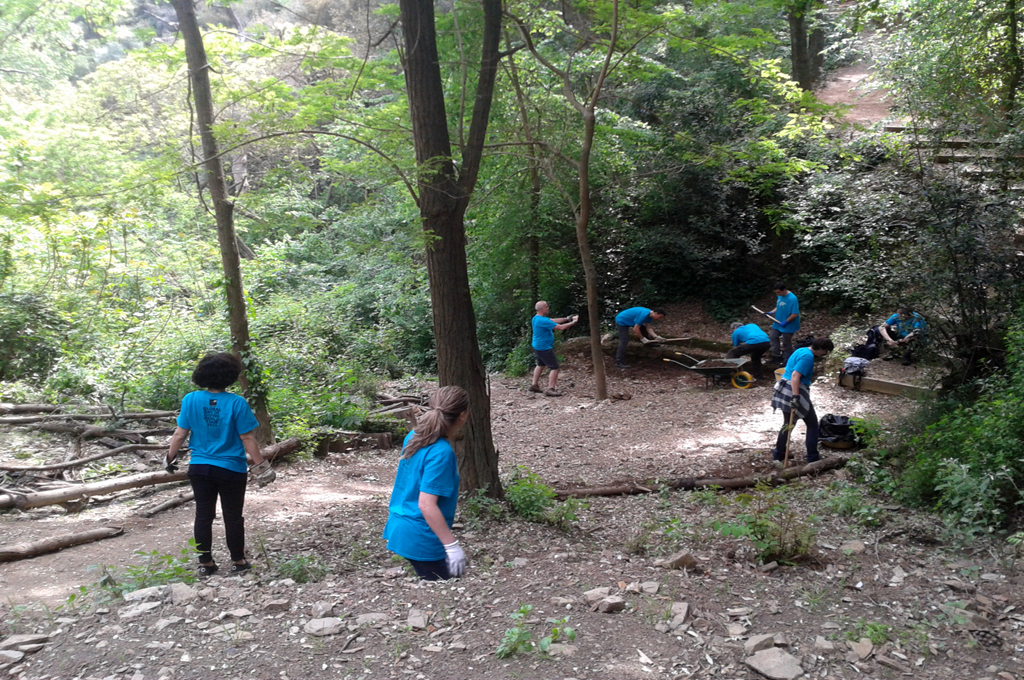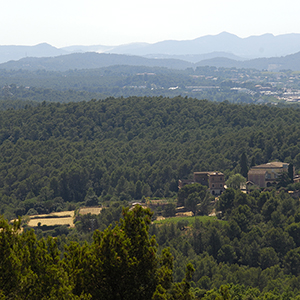The characteristics of Collserola Park are such that it is essential to engage citizens and involve them in order to make its management more effective.
To this end, one of Collserola’s aims is to build strong ties and to work jointly with as many individuals and groups (companies and other entities) in the area around the park. This means sharing the task of raising awareness of its features, but also of making these individuals and groups active participants and agents in everything related to the conservation and improvement of the natural and built heritage in the park, in other words, everything related to the park’s management.
There are two factors that facilitate this collaboration: the existence of an association movement and volunteers.
And to make it possible to achieve this, for some years now the park has been running an array of programmes for volunteers and to encourage participation. These programmes are aimed at individuals as well as at organisations, associations and companies and are intended to ensure that each one can find the way to form ties and collaborate with the park that best suits their particular characteristics.
All the programmes include:
– Awareness-raising and training activities about Collserola, the park and its characteristics. These activities vary in format in accordance with the particular programme concerned.
– Initiatives to improve, monitor, maintain and control the various elements that make up the park’s natural systems and heritage or their use.
– Moments of sharing and reflection on the park’s management.
People who wish to help to maintain and improve the park can do so:
– On an occasional basis in the morning sessions organised every three months by the Consortium, often in collaboration with other bodies. These sessions are publicised in the Park Agenda in the Do you want to help? Section.
During these sessions, work is done to maintain a heritage element in the park – a spring, stone shack, etc. – or some aspect of the flora and fauna or use of the park is studied.
– As a member of an organisation, association or company that is carrying out a project in partnership with the Consortium.
Within the park, there is a large number of organisations and associations with different characteristics, aims and motivations that focus their efforts on a very diverse range of issues. Some cover the whole of Collserola as their territory of reference, others are linked to a particular area or territory.
We Collaborate with the Park programme
Many organisations and associations wish to help raise awareness of the features of Collserola and to contribute to the maintenance of its heritage by mounting activities and initiatives. To enable this to happen, Consortium staff and representatives of the organisation or association agree on the nature of this collaboration.
Collaborative initiatives may be:
– Occasional. Day-long or morning sessions.
– Regular. These tend to revolve around a management issue or ambit or are related to improving a space or area that the organisation or association ‘sponsors’. In this case, the Consortium and the organisation or association draw up a partnership project that leads each year to a plan of work to be carried out.
The project details the content of the initiatives, any necessary training and technical advice, and how these initiatives are to be publicised.
The initiatives to be conducted vary in accordance with the characteristics of the organisation or association: the municipality they belong to, the field they operate in, the age of the participants, availability, interests, etc. The aim is to perform tasks that are meaningful to the day-to-day running of the park and which therefore make a real contribution to its operations, but which do not call for prior knowledge or expertise.
There are certain specialist organisations that focus their collaboration on areas in which they are knowledgeable. In all instances, the aim is to ensure that the initiative gives participants greater knowledge of the features of Collserola and the work involved in managing them.
Activities:
Related to raising awareness of the park’s features
– Acting as guides for routes covered on foot
– Information and dissemination of best practices
Tasks that help to maintain and improve the park
- Tasks related to natural systems, such as:
– Monitoring and maintaining repopulation initiatives
– Occasional tree planting or replacement
– Monitoring the evolution of an area damaged by fire and replacing burnt trees
– Monitoring flora that is a priority and of local interest
– Monitoring the removal of allochthonous invasive plants
– Tracking the distribution of heritage trees
– Controlling and maintaining pools
– Monitoring the fauna in the reservoir
– Installing bat boxes and monitoring their use
- Tasks related to built features:
– Cataloguing and maintaining springs and fountains
– Cataloguing and maintaining stone shacks and other drystone features
- Tasks related to the use of the park:
– Checking and maintaining signposts and other signals indicating routes to be covered on foot
– Studying the use of the natural park
– Cleaning
– Reclaiming and improving spaces
In addition to specific initiatives, the We Collaborate with the Park programme has a number of other, equally important goals:
– To facilitate mutual knowledge between the Consortium and the organisations and associations and within them about what we are all achieving together in the park
– To make it possible to share information about the park and about aspects and issues to do with managing it
– To facilitate by means of training, awareness-raising and reflection the involvement of organisations and associations in managing issues and spaces which, by virtue of their characteristics, are particularly relevant to them
A good opportunity for putting these into practice is provided by the Organisation and Association Meetings, held throughout the year, which include sessions for sharing knowledge and information, as well as training activities, reflection, etc.
This programme has been running for a number of years and it is now possible to speak of an embryonic Network of Collaborating Organisations and Associations that share information and which, on occasion, mount joint activities.
Programmes for participating in management work
These programmes encompass projects related to the management of certain areas or particular problems in which citizen involvement is essential in order to achieve good outcomes. Examples of this include:
Participatory project to eradicate ailanthus
Even though the Consortium manages the challenges presented by invasive allochthonous plants, its work to contain the problem would be insufficient without the help of people living within the park boundaries.
The proposal put forward by a residents’ association to conduct a campaign to raise awareness of the issue and to uproot young ailanthus in 2015 was the seed that grew to become this project.
From that point onwards, this participatory project has organised annual campaigns, the aims of which are to:
– Make everyone living in the various neighbourhoods in the park aware of the problem by working jointly with existing residents’ groups
– To increase our knowledge of its spread with their help
– To enlarge the surface area covered by adding private land to the public property already included in the project
Participatory management of the Riera de Vallvidrera
A participatory project was launched in 2007 to reclaim the Riera de Vallvidrera gully. This initiative was in keeping with area of work done by the ACA (Catalan Water Agency) to comply with the Water Framework Directive that commits all EU member states “to achieve good qualitative and quantitative status of all water bodies by the end of 2015”.
The Collserola Park Consortium, the University of Barcelona and the Habitats Association set up a group to drive the project forwards. This group implemented the project with the support of the ACA and the three municipalities involved, Molins de Rei, Sant Cugat del Vallès and the Sarrià-Sant Gervasi District in Barcelona.
A number of local organisations, associations and individuals interested in working together to improve the gully participated in the initiative.
For further information, visit: http://www.parccollserola.net/rieravallvidrera/
Even though technical initiatives to make improvements have not been pursued for some years now, from time to time some organisations and associations monitor the environmental condition of spots that they have sponsored within the framework of the Rivers project, or to control and maintain work done previously, such as monitoring the growth of trees that have been planted, the uprooting of invasive species, etc.
Agri-environmental transition programme
The Consultative Council
The Consultative Council is the Collserola Park Consortium’s participative body. The members of this council are representatives of the various social, academic, cultural, professional and economic sectors and private not-for-profit entities that pursue goals of general interest in line with those of the Consortium.
The Consultative Council’s functions are to inform, consult and advise in relation to the Consortium’s Initiatives and Investments Plan. Fifty-one organisations currently sit on the council.
Corporate social responsibility (CSR) activities in the park
For some years now, a number of companies and their staff have been seeking not only to engage in their business activities but also to contribute to the social and environmental betterment of the community around them. This is the aim of the corporate volunteers, a group that falls within the realm of corporate social responsibility (CSR).
Given that one of the aims of the Consortium is to raise awareness of the features of the park and to involve citizens in the management of a protected natural space, CSR activities are a good opportunity to work hand in hand with the business sector.
The programme of work we propose covers a number of aspects:
- An initial presentation of the park and its management, given by a member of the Consortium’s staff, which provides the context for the action to be carried out that day
- Travel to the area where the initiative is to be carried out
- Presentation of the initiative and the specific tasks involved
- Completion of the activity (2-3 hours) under the supervision of a member of the Consortium’s staff
- Evaluation of the activity.
The charge for collaborating is €110.40 per group of 25 people. This covers the co-ordination work done by the park’s staff and the tools and materials used.
Transport, allowances and other expenses are paid for by the company.
Entitats col·laboradores
Programa Col·laborem al Parc
ALNUS, Ambientúbers, AVV Sta. Maria de V. i Mas Sauró, Barcelona Fòrum District, Collserola verda, Club Muntanyenc St. Cugat, DEPANA, Ecowikis, Associació El Mussol, Fes fonts-Fent Fonting, Foment Martinenc, Omnium Cultural Esplugues, WWF Barcelona.
AMPA Pere Quart, AFA Congrés Indians, AMPA E. Saltells, Centre Cruïlla, CEsplai El Tricicle, Escola Fàsia- Sarrià, E. Ponent Cel, Escola Gravi, Escola Nabí, Escola Pare Damià, E. Pineda, Escola Ramon Fuster, FEDAC Cerdanyola, IES. Barri Besòs, INS. Montjuïc, IES. Bernat el Ferrer, INS. Rubió i Tudurí.
Projecte de participació en l’erradicació de l’ailant
AiGA Sol i Aire, AVP Mas Guimbau i Can Castellví, AVV Sta. Maria de V. i Mas Sauró, AV El Sanatori del Rectoret, APVF La Floresta, Associació El Mussol, AVV Can Cortés.
Projecte de gestió participada de la riera de Vallvidrera
Associació El Mussol, Grups participants en Projecte Rius (Associació Hàbitats)

